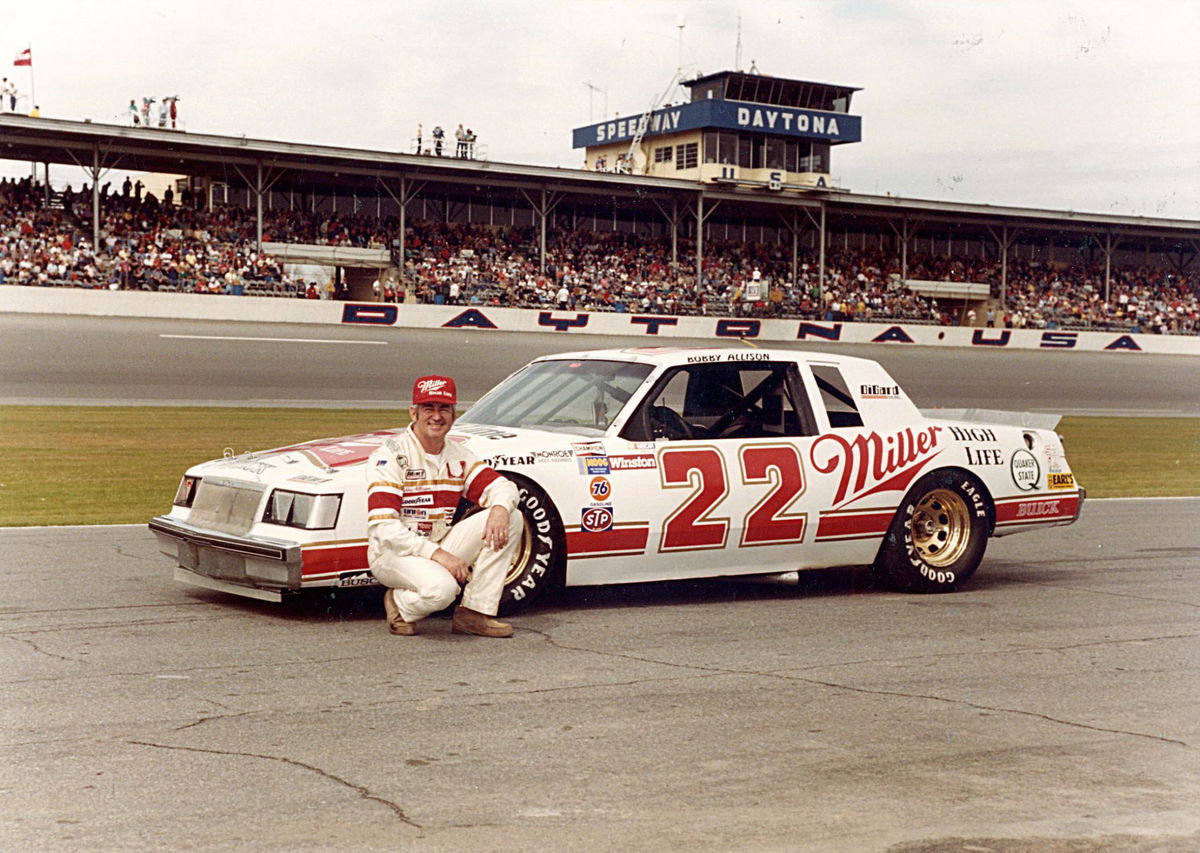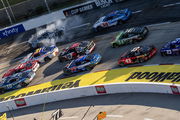

Restrictor plate races had become a staple in NASCAR Cup Series racing, especially when racing at superspeedways. This was practiced mostly throughout the modern era (since 1988). It was only since the 2020 season that NASCAR stopped enforcing restrictor plates on superspeedways (Daytona and Talladega). While it did make the sport safer, it also changed the way that races were run. With less horsepower, cars tend to get packed together and the size of packs is bigger than that seen in other races. This eventually leads to tight-pack racing and an increased risk of multi-car crashes.
Watch What’s Trending Now!
One of the primary reasons for enforcing the use of restrictor plates was a horrifying crash that took place in the late 80s. It was a crash involving Bobby Allison which changed the course of history for the sport.
ADVERTISEMENT
How impactful was the crash involving Bobby Allison?
On May 3rd, 1987, NASCAR legend Bobby Allison was leading the pack at the infamous Talladega Superspeedway. As he entered the final lap, his car’s left rear tire blew out. That sent him careening into the catch fence at over 190 mph. The impact was so severe that debris from his car flew into the grandstands, injuring several fans. For many, the crash was much too horrifying to even watch on TV.
35 years ago today, Bobby Allison's wild crash during the 1987 Winston 500 @ Talladega.pic.twitter.com/OftqIJQknS
— Andrew (@Basso488) May 3, 2022
Allison, thankfully, survived the crash. However, it was a close call for him. The incident was a wake-up call for NASCAR officials. Who then realized that something needed to be done to prevent similar accidents in the future.
ADVERTISEMENT
In the wake of his wreck, NASCAR officials began to look for ways to slow the cars down. With hopes of reducing the risk of accidents. One solution that they came up with was the use of restrictor plates. However, they were only to be used on high-speed tracks such as superspeedways.
ADVERTISEMENT
Top Stories
Controversial Crew Chief Finds Fresh Start With 17-Yo NASCAR Team

NASCAR Team Owner Demands Charter-Like Deal for Financially Struggling O’Reilly Series

Footage Surfaces of Florida Police Arresting NASCAR Veteran Over Disturbing Public Misbehavior

Ex-Fox Broadcaster Publicly Exposes One of His Own Amidst Denny Hamlin’s Ugly Social Media Feud

Kyle Larson’s Sprint Car Rivals Threatens Criminal Action Against Track Owner Over $15,000 Winner’s Purse

What is a restrictor plate exactly?
A restrictor plate is a small metal plate with holes in it that is placed on the carburetor of a race car. Its purpose is to limit the amount of air and fuel that can enter the engine, thus reducing the power output of the car. This is done in order to decrease the speed of the race cars, making the races safer both for the drivers and the fans. The use of restrictor plates was first implemented in the 1988 season.

Getty
DAYTONA BEACH, FL – FEBRUARY 13: Dale Earnhardt Jr., driver of the #88 National Guard/AMP Energy Chevrolet, looks on from the grid during qualifying for the NASCAR Sprint Cup Series Daytona 500 at Daytona International Speedway on February 13, 2011, in Daytona Beach, Florida. (Photo by Jared C. Tilton/Getty Images for NASCAR)
In the modern era of NASCAR, one driver stood out as a dominant force in the restrictor plate racing era. That was none other than Dale Earnhardt Jr. He was known for his skill and precision behind the wheel at the Talladega Superspeedway and Daytona International Speedway, where restrictor plate racing was a staple. He was highly skilled in navigating through the tight packs of cars. Due to this, Junior was able to amass multiple wins at restrictor plate tracks.
ADVERTISEMENT
WATCH THIS STORY: NASCAR’s 4 Most Under-the-Radar High Performers of 2022
Despite the challenges that restrictor plate racing presented, it slowly became a beloved part of the sport. Fans enjoy the close finishes and exciting multi-car finishes that these races provide.
ADVERTISEMENT
ADVERTISEMENT
ADVERTISEMENT
ADVERTISEMENT

